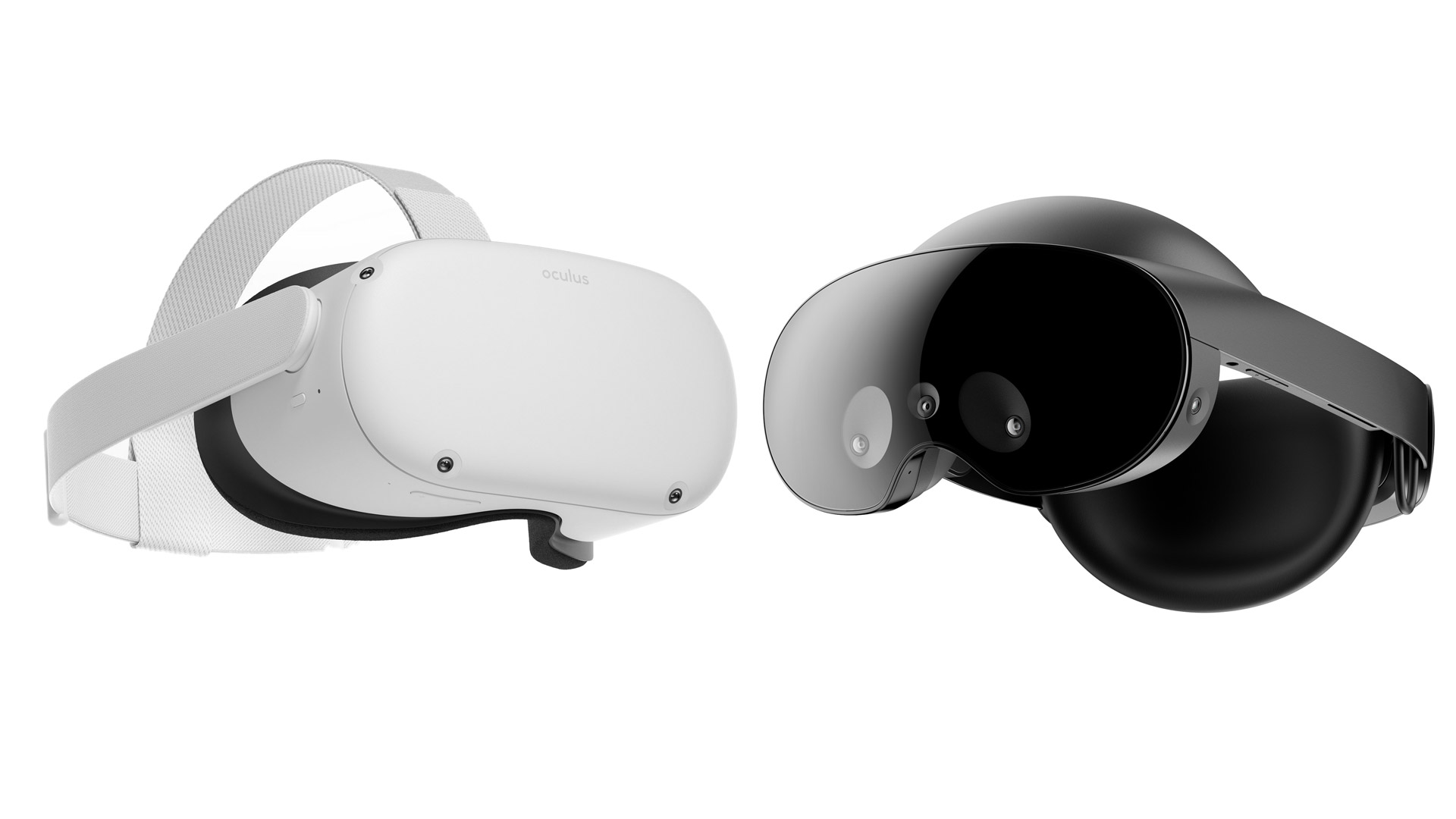Quest Pro has finally been revealed, and while it’s a much more expensive headset, inevitably people are interested in knowing how it compares to Meta’s next best headset, Quest 2. So here we’re going to look at Quest Pro vs Quest 2 specs side-by-side and break down what they really mean in detail.
There’s so much about XR headsets that is difficult to communicate from paper specs alone. So similar to my PSVR vs. PSVR 2 spec comparison here we’ll look at the numbers and I’ll use my recent experiences with the headset to explain more about what they do or don’t mean.
Quest Pro vs. Quest 2 Specs |
||
| Quest Pro | Quest 2 | |
| Resolution | 1800 × 1920 (3.5MP) per-eye, LCD (2x) | 1,832 × 1,920 (3.5MP) per-eye, LCD (1x) |
| Refresh Rate | 72Hz, 90Hz | 60Hz, 72Hz, 80Hz, 90Hz, 120Hz |
| Optics | Pancake non-Fresnel | Single element Fresnel |
| Field-of-view (claimed) | 106ºH × 96ºV | 96ºH × 96ºV |
| Optical Adjustments | Continuous IPD, continuous eye-relief | Stepped IPD, stepped eye-relief (via included spacer) |
| IPD Adjustment Range | 55–75mm | 58mm, 63mm, 68mm |
| Processor | Snapdragon XR2+ | Snapdragon XR2 |
| RAM | 12GB | 6GB |
| Storage | 256GB | 64GB, 128GB, 256GB |
| Connectors | USB-C | USB-C |
| Weight | 722g | 503g |
| Battery Life | 1–2 hours | 2–3 hours |
| Headset Tracking | Inside-out (no external beacons) | Inside-out (no external beacons) |
| Controller Tracking | Inside-out (headset line-of-sight not needed) | Headset-tracked (headset line-of-sight needed) |
| Expression Tracking | Yes (eyes, face) | none |
| On-board cameras | 5x external, 5x internal | 4x external |
| Input | Touch Pro controllers (rechargeable), hand-tracking, voice | Touch v3 (AA battery 1x), hand-tracking, voice |
| Audio | In-headstrap speakers, dual 3.5mm aux output | In-headstrap speakers, 3.5mm aux output |
| Microphone | Yes | Yes |
| Pass-through view | Yes (color) | Yes (B&W) |
| MSRP | $1,500 | $400 (128GB), $500 (256GB) |
So then, let’s talk about all of this.
Display & Optics
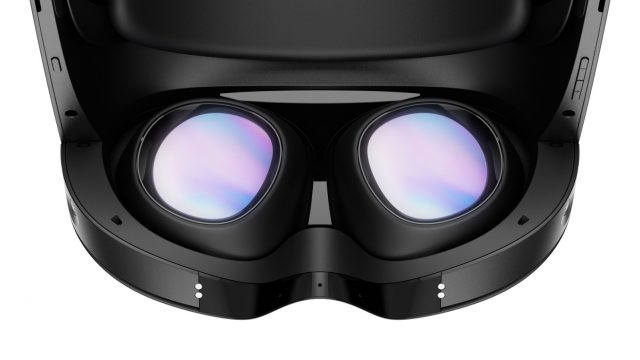 This is one part of the spec sheet that’s actually pretty straightforward. With nearly the same resolution between Quest Pro and Quest 2, there’s just not going to be a real jump in resolving power between them. That said, Meta claims Quest Pro should look at least a bit sharper thanks to the optics.
This is one part of the spec sheet that’s actually pretty straightforward. With nearly the same resolution between Quest Pro and Quest 2, there’s just not going to be a real jump in resolving power between them. That said, Meta claims Quest Pro should look at least a bit sharper thanks to the optics.
The big deal with the new pancake optics in Quest Pro is that they’ve allowed the headset to shrink so it doesn’t feel quite as much like a box on your face. But Meta also says they are clearer, offering a 25% increase in sharpness at the center, and a 50% increase in the peripheral region.
That should mean the Quest Pro has a much better ‘sweet spot’ (the variance in clarity from one edge of the lens to other). However, it’s not apparent to me yet if these supposed increases in sharpness are specific to just the optics or if they include Quest Pro’s display as well—after all, if your resolving power is fundamentally limited by the number of pixels on the display, increasing the clarity of the lens won’t make any difference (I’ve been attempting to clarify this with Meta).
Granted, we know that the periphery of Quest 2’s lens is definitely limited by the lens rather than the display, so any increase there is sure to be an improvement in the overall sweet spot of the lens, especially if it’s really by 50%!
Regarding the refresh rate of Quest Pro and Quest 2… while the latter originally shipped with a 72Hz refresh rate, it can now run up to 120Hz. Quest Pro on the other hand tops out at 90Hz, and sources tell me it’s unlikely that it will increase after launch.
90Hz is largely considered the industry standard for a ‘good’ refresh rate on a VR headset, whereas anything higher has proven to be a nice-to-have but not quite essential feature. On Quest 2 only a small number of apps actually run at 120Hz. I’d bet the majority actually target 72Hz.
Optical Adjustments
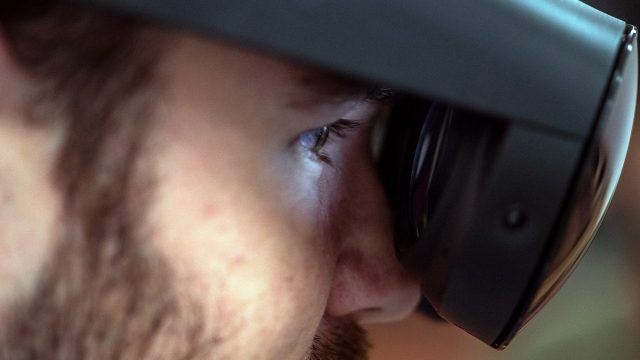
Here Quest Pro gets some upgrades that I’m happy to see. While both headsets technically have a physical IPD adjustment and eye-relief adjustment, Quest 2 is somewhat hampered in this regard because the lenses can only be placed in three discrete IPD positions (58mm, 63mm, 68mm) and the eye-relief only has two positions. Neither of these adjustments can be easily made while wearing the headset itself.
Quest Pro on the other hand gains a continuous adjustment for both IPD (55–75mm) and eye-relief. And both adjustments are made with dials on the headset, making it easier for anyone to find the best lens position with less fiddling.
And one small but meaningful bonus on Quest Pro comes from its eye-tracking sensors… the headset will automatically measure the distance between the user’s eyes and tell them to position the lenses in the correct place. This is great because most people don’t actually know their IPD value, despite it being pretty important to XR devices, nor are most people particularly good at finding the right IPD position by visual inference.
Processor & RAM
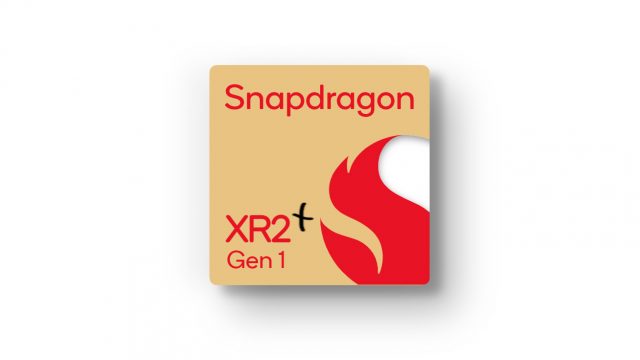 Qualcomm’s Snapdragon XR2 is the industry-standard chip for immersive XR headsets, and it has faithfully powered Quest 2 since the headset’s launch two years ago. But for Quest Pro, and all of its extra sensors, Meta needed more power. Instead of waiting for the next-gen XR2 chip, the company worked with Qualcomm on an interim solution which it calls Snapdragon XR2+.
Qualcomm’s Snapdragon XR2 is the industry-standard chip for immersive XR headsets, and it has faithfully powered Quest 2 since the headset’s launch two years ago. But for Quest Pro, and all of its extra sensors, Meta needed more power. Instead of waiting for the next-gen XR2 chip, the company worked with Qualcomm on an interim solution which it calls Snapdragon XR2+.
My understanding is that XR2+ is—transistor for transistor—literally the same chip as XR2 but backed up by twice the RAM (12GB) and a better cooling solution which allows it to run at higher speeds without overheating. Anyone who has ever overclocked their PC knows just how much heat is a limiting factor in processor performance; Meta’s claim that Quest Pro is getting some 50% more power out of the same chip is not unreasonable.
The big question on my mind is how much of that additional power translates to a headset that can run existing content at higher fidelity as opposed to how much of the extra power is reserved for the headset’s system-level functions. I would guess the majority of the extra power is going to the latter—after all, Quest Pro not only has higher resolution sensors, it has six additional sensors compared to Quest 2. All of that extra incoming data needs to be processed with as little latency as possible.
Assuming that’s the case, existing Quest 2 games probably won’t run any better on Quest Pro, while the benefits in processing power will come in the form of new apps that take advantage of system-level capabilities like improved passthrough and face-tracking.
I’ve asked Meta and third-party developers for more info on this front. Specifically I’m interested to know if an app that doesn’t need face-tracking can tap into the cycles that would have otherwise been reserved for that feature.
Field-of-view
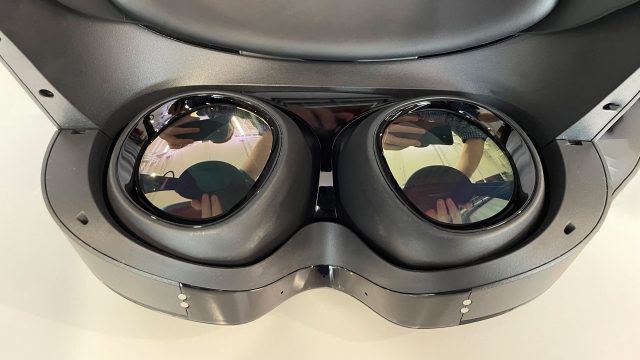
This is another place where the specs as we see them are fairly clear: there isn’t a particularly obvious difference to me in the field-of-view between the two headsets.
However, a nice little bonus from the new continuous eye-relief adjustment on Quest Pro is that everyone will be able to move the lenses as close to their eyes as they are comfortable with. With varying facial topography, people can experience fairly different fields-of-view when the lens position is static. The ability to move the lenses forward and back means more people will be able to experience Quest Pro’s maximum field of view than if the lenses couldn’t move.
Another note on field-of-view is that Quest Pro is designed with an open peripheral view (compared to Quest 2 which blocks as much of the outside world as possible). This is intentional to make the headset’s passthrough mode feel more natural (since the real world in your periphery matches up with the passthrough view in the center of your vision.
Thoughtfully, Quest Pro also ships with ‘light blockers’ which magnetically attach to hide much of the outside peripheral view. An optional ‘full light blocker’ accessory goes even further and provides a more complete face-gasket for blocking out as much of the outside world as possible.
In the future it would be nice to see some kind of dynamic solution to opening or closing the peripheral field-of-view to the real world, but in any case, Quest Pro gets good marks for a high level of flexibility in this regard.
Continue on Page 2: Weight, Battery Life, Controller Tracking, & More »
,
Weight
Quest Pro is clearly the heavier device at 722g to Quest 2’s 503g. However, Quest 2’s 503g is with the default soft strap which is, in my opinion, terrible. So for me and anyone else who is adding a better strap to Quest 2, the weight jumps up much closer to what we see on Quest Pro. For instance, Quest 2 with the Elite Strap is 625g, or even more if you’re adding an extra battery on top of that.
So assuming you’ve got a decent strap on Quest 2, Quest Pro isn’t actually that much heavier. And the fact that it’s more compact means the momentum about your head will be somewhat reduced. In theory this has the potential to make Quest Pro the more comfortable headset, but that will likely come down to whether or not you like ‘halo’ style headstraps which is what Quest Pro employs.
Battery Life
This one is a doozy. At 2–3 hours of battery life, Quest 2 was already low enough to prompt a massive aftermarket of straps with additional batteries built-in (Meta even makes their own battery strap!). Quest Pro, with 1–2 hours of battery life seems like it’s going to be a real dealbreaker for some use-cases of the headset.
Meta was smart enough to try to address this problem with an included dock which will hopefully encourage people to keep the headset in an always-charged state—so at least it will be ready to go from one session to the next.
But it’s almost certain that many will be craving more runtime from Quest Pro. With a battery already in the back of the strap, it’s likely that batteries tethered to belts will become a popular accessory for the headset.
Controller Tracking
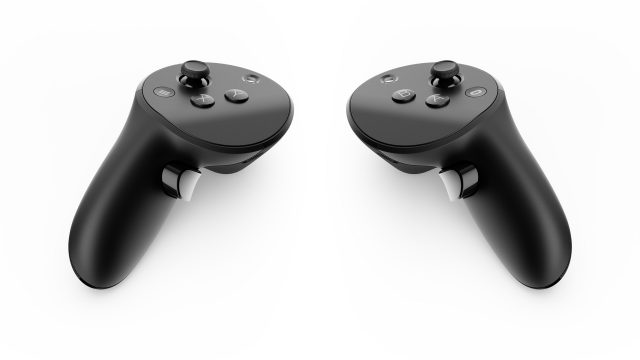
This one ought to be a straight-up win for Quest Pro (assuming tracking performance hasn’t been compromised). With on-board inside-out tracking and new features, the Touch Pro controllers are just better in every way.
Gone is the tracking ring which gives the controllers a tighter center of gravity and makes them much less likely to bump together.
On-board inside-out tracking means the controllers can track anywhere, even when your hands are at your side, behind you, or even if they are occluding each other.
Then there’s improved haptics, a new pinch sensor, and a new stylus sensor, opening new ways to use the controllers (I talk more about how each of these work here).
Luckily though, this is a win-win for both Quest Pro and Quest 2, since the controllers are compatible with both! They aren’t cheap, but if you like what you see, you’ll be able to add Touch Pro controllers and their new capabilities to Quest 2 for $300.
Expression Tracking
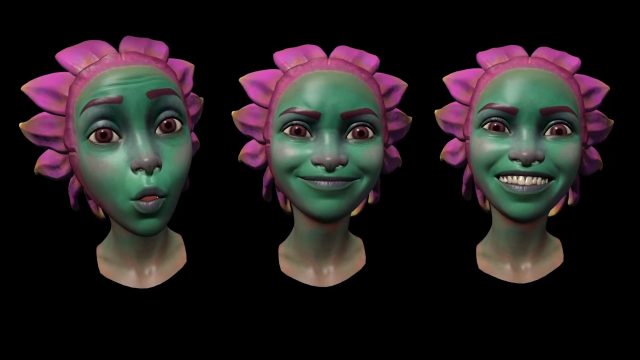
This is of course another big win for Quest Pro. The headset has five inward-facing sensors that watch your eyes and face, allowing the headset to create a pretty compelling model of your expressions. Even in these early stages it’s making a big difference to the feeling of avatars in social VR settings.
Eye-tracking can also be used for much more than making you look more natural in social settings, even beyond what I mentioned further above (how eye-tracking allows Quest Pro to tell users where the ideal lens position is for their specific eyes).
For one, eye-tracking can be used for input, giving developers additional insight into what you intend to do so that a game can feel more intuitive (or in the case of something like a horror game, even more scary!).
Beyond that Quest Pro supports dynamic foveated rendering which uses eye-tracking to render a high resolution portion of the scene only where you’re looking. This allows the world to appear more detailed without an increase in processing power.
Meta tells me a foveated rendering solution will be provided to developers, but they’ll also be allowed to implement their own.
Audio
Like Quest 2, Quest Pro uses on-board audio built into the headstrap. It’s still not going to come close to satisfying audiophiles or gamers looking for maximum immersion, but Meta claims it has made some improvements to the speakers that “in most cases can deliver over a half octave deeper bass tones” on Quest Pro. It also says it has reduced the outbound sound of the headset by 10dB compared to Quest 2, making sounds quieter for those outside the headset.
Passthrough View
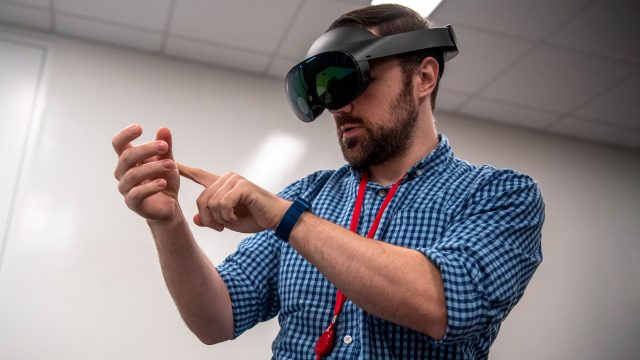
Both Quest Pro and Quest 2 have a passthrough view and passthrough AR capabilities, but Quest Pro offers the clearly superior experience. Not only does Quest Pro gain full-color passthrough, the view is higher resolution too.
Meta has confirmed with Road to VR that Quest Pro’s front-facing sensors are 1,280 × 1,024, compared to the 648 × 488 sensors on Quest 2. That makes for a substantially clearer view of the real world on Quest Pro. Granted, there’s still a lot of improvement here… we’re pretty far from being able to read normal sized font using the passthrough view.
Increased sensor resolution doesn’t just mean the passthrough video looks better, it also means Quest Pro likely creates a more accurate depth estimate of the world around you which informs how accurate the stereoscopic reconstruction is which makes depth more realistic, especially at the edges of objects. This means the headset’s understanding of the geometry of the world around you is a little less coarse, making passthrough AR look and feel a little more realistic.
Ultimately Quest Pro feels like a single headset that offers a high quality AR or VR experience, which is why it’s the first headset from Meta that we’re calling mixed reality.
Well that’s some 2,000 words on the differences between Quest Pro and Quest 2. You couldn’t possibly have more questions, could you? Just kidding, I’m sure you do—feel free to fire away in the comments below!
